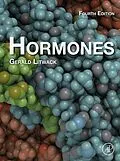Hormones, Fourth Edition provides a report on the field of human hormones viewed in light of our current understanding of cellular and subcellular architecture, along with the molecular details of their modes of action. Comprehensive information about hormone action on canonical and non-canonical signaling pathways at cellular and subcellular level and effects on architecture and function of organ systems are discussed. All chapters in this new edition have been completely updated to cover advances in endocrinology research, which has expanded significantly in the last few years. Vast coverage of hormones not previously covered and newly discovered aspects of hormone action are also included. This new fourth edition is intended to be used by advanced undergraduates and graduate students in the biological sciences. It will also provide useful background information for health professionals, clinicians and researchers in the field of endocrinology, metabolism and biochemistry. - Includes updates on all chapters - Covers sleep hormones, growth factors, intestinal hormones, calcium-sensing receptor of parathyroid, and others - Provides essential basics for advanced undergraduates, graduate students and researchers in the biological sciences, as well as clinical aspects and applications for clinicians - Presented in separate hormone systems, covering the subcellular mode of action of selected hormones and a detailed understanding of their human anatomy and physiology
Autorentext
Anthony W. Norman received his A.B. from Oberlin College in 1959, and an M.S. and Ph.D. in Biochemistry in 1961 and 1963, respectively, from the University of Wisconsin, Madison. Following postdoctoral work in Paul D. Boyer's group at UCLA, in 1964 he joined the Department of Biochemistry at University of California, Riverside, as an Assistant Professor. From 1976 to 1981 he served as Chair of the department and currently holds a Presidential Chair and is a Distinguished Professor of Biochemistry and Biomedical Sciences. Dr. Norman has also been active for some 25 years in medical education on the UC-Riverside campus and at UCLA through participation in the UR/UCLA Program in Biomedical Sciences, of which he was Dean and Director from 1986 to 1991.
Dr. Norman's biomedical research career has focused on the mechanism of action of the vitamin D family of steroids. His chief contributions to these areas of cellular and molecular endocrinology have played a pivotal role in defining the boundaries of this research domain via discoveries that have opened new areas of investigation. The first of these was the discovery in 1968, and chemical characterization in 1971, of the hormonally active form of vitamin D, 1a,25(OH)2-vitamin D3. Subsequent achievements include the discovery and characterization of the nuclear receptor for 1a,25(OH)2D3, the clinical evaluation of 1a,25(OH)2D3 in renal osteodystrophy, articulation of the concept of the vitamin D endocrine system, the importance of 1a,25(OH)2D3 to insulin secretion and the discovery of a new rapid, nongenomic, signal transduction process for 1a,25(OH)2D3.
Dr. Norman has been the recipient of awards that include a Fulbright Fellowship, 1970; Public Health Service Career Development Award, 1970; Mead Johnson Award, American Institute of Nutrition, 1977; Ernst Oppenheimer Award, Endocrine Society, 1977; Visiting Lecturer Australian Society of Endocrinology, 1978; Visiting Faculty Member, Mayo Clinic, 1981; Prix Andre.
Klappentext
Hormones, Fourth Edition provides a report on the field of human hormones viewed in light of our current understanding of cellular and subcellular architecture, along with the molecular details of their modes of action. Comprehensive information about hormone action on canonical and non-canonical signaling pathways at cellular and subcellular level and effects on architecture and function of organ systems are discussed. All chapters in this new edition have been completely updated to cover advances in endocrinology research, which has expanded significantly in the last few years. Vast coverage of hormones not previously covered and newly discovered aspects of hormone action are also included.
This new fourth edition is intended to be used by advanced undergraduates and graduate students in the biological sciences. It will also provide useful background information for health professionals, clinicians and researchers in the field of endocrinology, metabolism and biochemistry.
- Includes updates on all chapters
- Covers sleep hormones, growth factors, intestinal hormones, calcium-sensing receptor of parathyroid, and others
- Provides essential basics for advanced undergraduates, graduate students and researchers in the biological sciences, as well as clinical aspects and applications for clinicians
- Presented in separate hormone systems, covering the subcellular mode of action of selected hormones and a detailed understanding of their human anatomy and physiology
Inhalt
1. Introduction 2. Steroid Hormones: Chemistry, Biosynthesis, and Metabolism 3. The Hypothalamus and Anterior Pituitary 4. Posterior Pituitary Hormones 5. Thyroid Hormones 6. Pancreatic Hormones: Insulin and Glucagon 7. Gastrointestinal Hormones 8. Eicosanoids 9. Calcium-Regulating Hormones: Vitamin D, Parathyroid Hormone, Calcitonin & Fibroblast Growth Factor-23 10. Adrenal Corticoids 11. Hormones of the Adrenal Medulla 12. Androgens 13. Estrogens and Progestins 14. Hormones of Pregnancy, Parturition and Lactation 15. Hormones Related to the Kidney and Cardiovascular System 16. The Pineal Gland 17. Growth Factors
